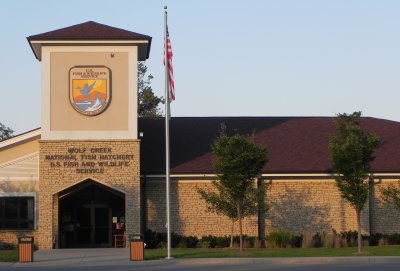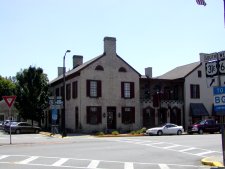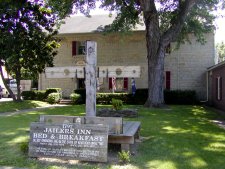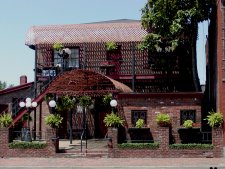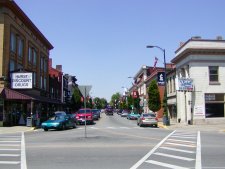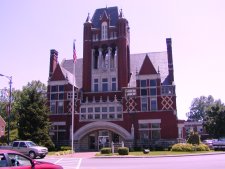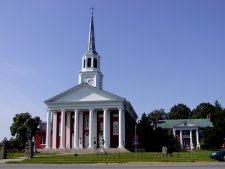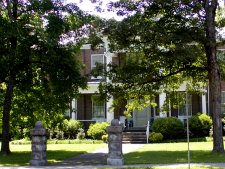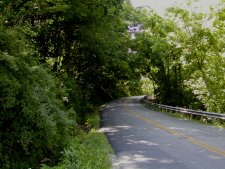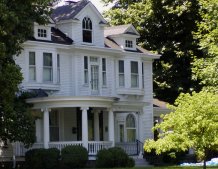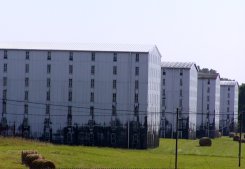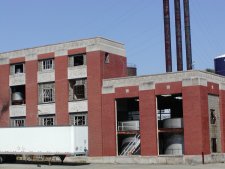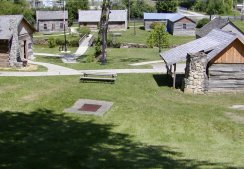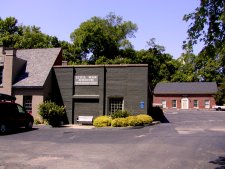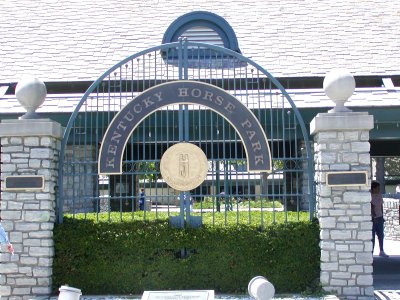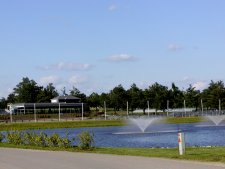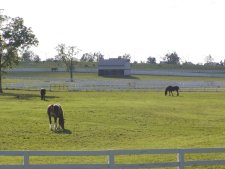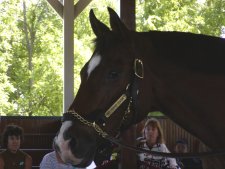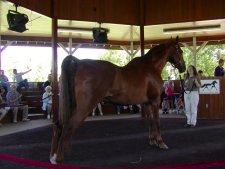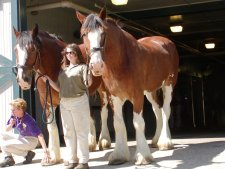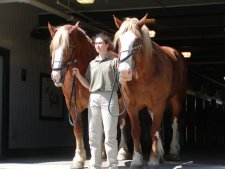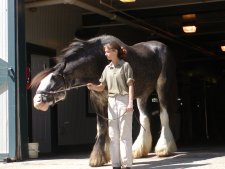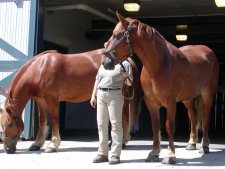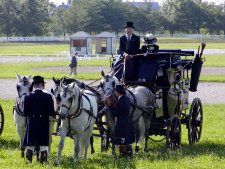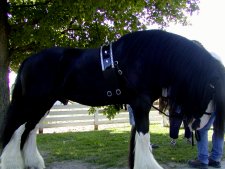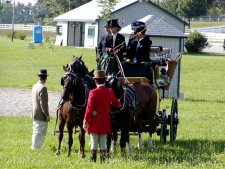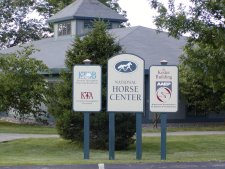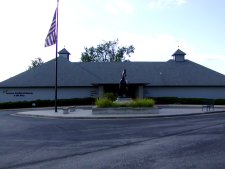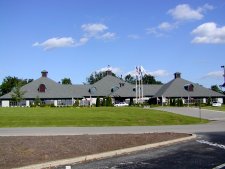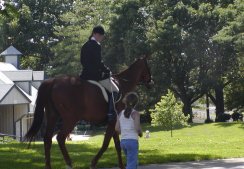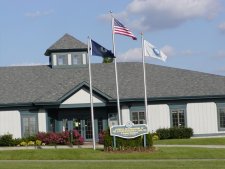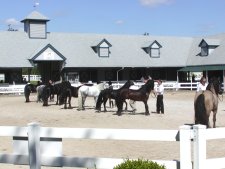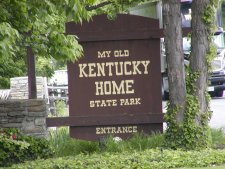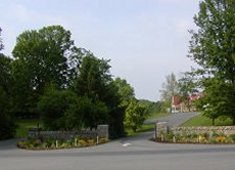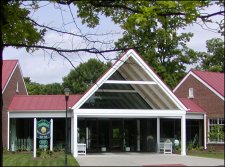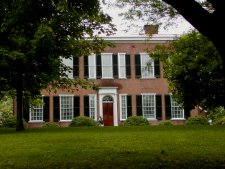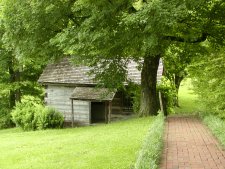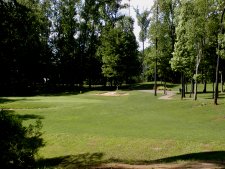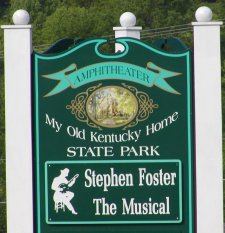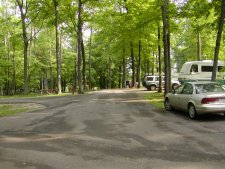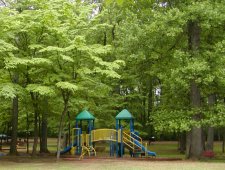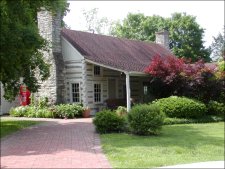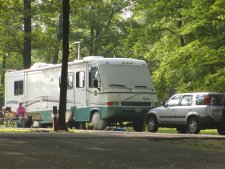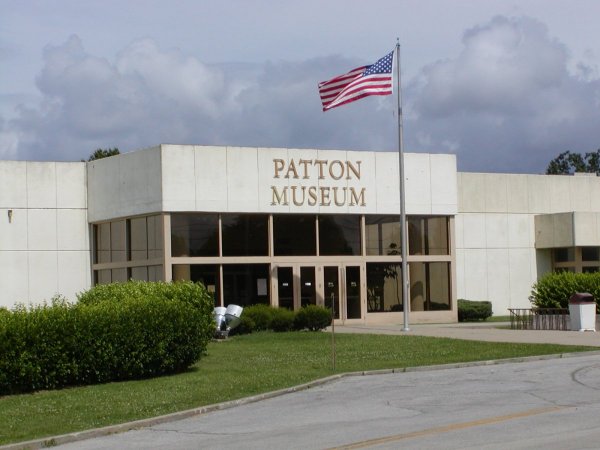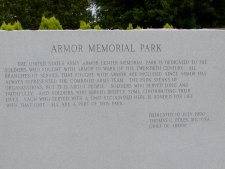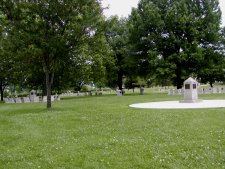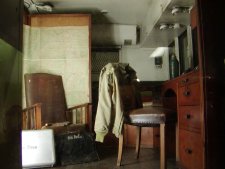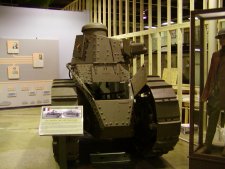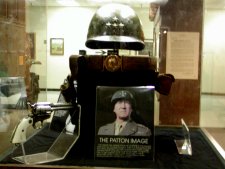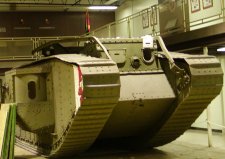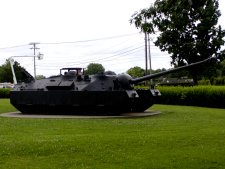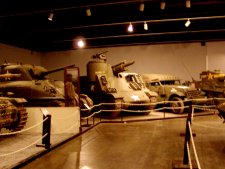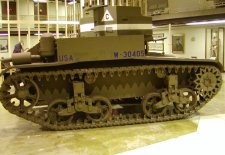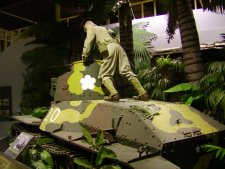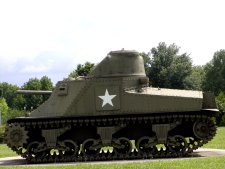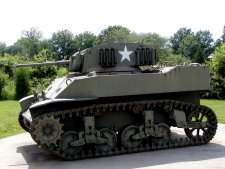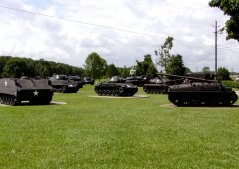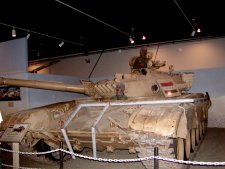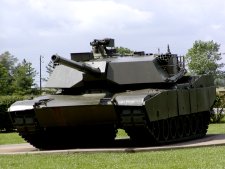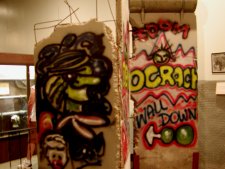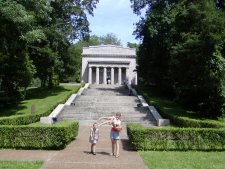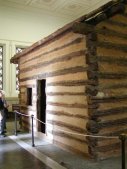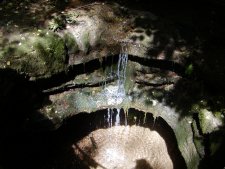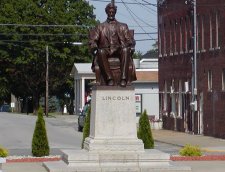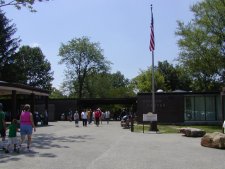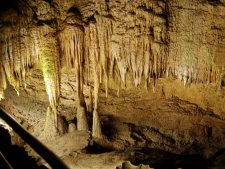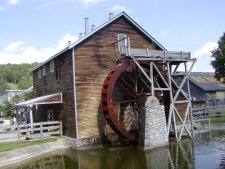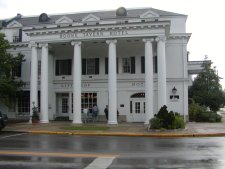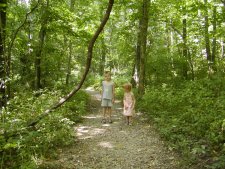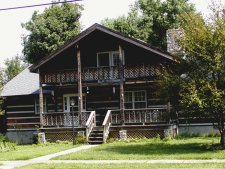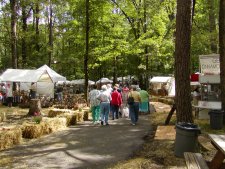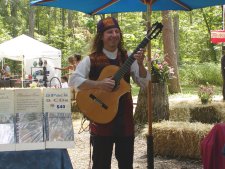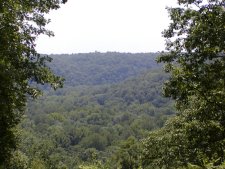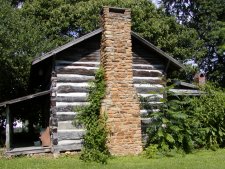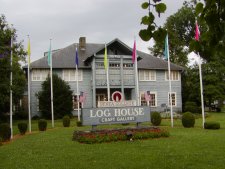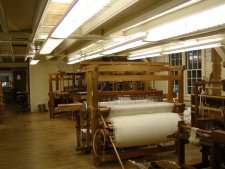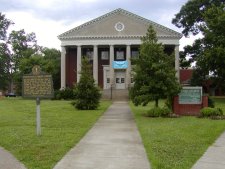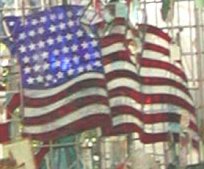We arrived here at the hatchery on August 30, 2010 with high hopes and great anticipation of our first experience in a fish hatchery. With our past experience with the Fish 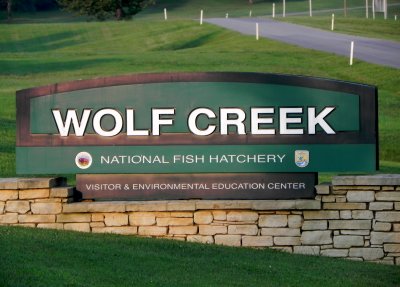 & Wildlife Service, we were expecting the very best.
& Wildlife Service, we were expecting the very best.
We arrived on a Monday afternoon and were greeted warmly by the other volunteers in the village. A quick check with the volunteer coordinator and one of the volunteers then showed us to our site. We were given our first two days just to get set up and moved into our home for the next three months.
The volunteer village is as attractive as any we have seen in any of the places that we have yet spent any time. This park not only has very large, level sites, but there are even flowers and landscaping. The only weak spot is that there are no large trees. New trees have been planted but that will take a few years before one can sit under them.
All RV sites have complete hook-ups with 50/30/20A outlets, water, sewer and propane provided. The park also has limited wifi for the RVers to use. The sites are edged in landscape timbers and are completely graveled. Each site also has a picnic table and fire ring. There ample space between sites for privacy, yet near enough for good neighbor contacts.
Volunteers here have the visitor center as their primary duty. Only two volunteers work in the fish hatchery and those who wish to spend time in the hatchery are expected to do so on their own time. I never figured out how you get to work in the hatchery. Since learning about a hatchery is the main reason that we came, this is one of the things that I first had difficulty with. I was lead to believe that we would be leading tours of the hatchery before we came.When training began on Thursday morning, it started with extensive discussion of how to clean things, in particular the public restrooms and the restroom for the office staff, all given by two volunteers. There was a list of harsh chemicals that we were expected to use, including one that I had previously told the volunteer coordinator that effected Pam's asthma. We were also told by these two ladies that the manager would come around and inspect behind us when he had time. There was even a three page check list of things to be cleaned each day and we were told that on slow visitor days we should do extra cleaning.
By noon of our first day it was apparent that we did not belong in this position. While at lunch I printed out a copy of our resume, where it states that we do not clean public restrooms. When I showed this to the coordinator, she immediately knew exactly what the problem was, even though she didn't take the time to read it! She claimed that she had missed that when I sent the resume, more than six months ago. We then offered to leave but she insisted that she would make adjustments to things to keep us there. We stayed, even though that turned out to be a big mistake.
Of all places that we have been in the past ten years, this is the very first where so little trust is placed in their volunteers. Not only is it unusual in that none are trusted to have a key to anything, they even keep the toilet paper used in the employee restroom locked up and you have to get one of them to get if when you need TP if assigned to clean their toilet. We got the distiinct feeling that the manager considers RV volunteers to be little better than the people along the roads with signs "Will work for food." At no time did he seem at all friendly or welcoming. We also have several other issues that we believe to be problems at this facility.
The net result was that Abby, the coordinator, told the other volunteers that they would have to do extra cleaning because we were refusing to do so. She also gossiped with the two ladies who were assigned to train us and caused very hard feelings on their part and when we asked for a meeting with them in her presence, she refused to do that but said that she would take care of it. We again told her that we felt it best if we leave, but she once more assured us that she would get things corrected. At this point we had been there for about ten days, so agreed to at least give it a few more days. On the following Monday she came in, called us into a meeting with the manager and told us that we were causing too many problems and were to leave immediately. 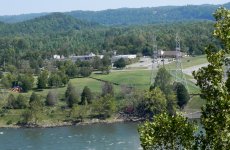
We were accused by the manager of personal attacks on him, which was not true, since we don't even know him. As far as I could tell, the hatehery is well run, with the exception of the issues that we had. There were numerous other outrageous statements made about what we were supposed to have done and even though I spent more than an hour in an attempt to at least smooth things so that we could leave without hard feelings, it was made pretty clear that neither the volunteer coordinator nor the hatchery manager were willing to have any part in that.
We left the park and and were on the road by about 11 am and never looked back. I suppose that in an agency where we have had so many outstanding experiences, it was inevitable that one day we would meet some people who were not that way, but we were totally unprepaired for that event. We still believe in the Fish and Wildlife Service and in fact will be going to another wildlife refuge this coming winter. I am still puzzeled by the events that took place at this location and have no idea how it could have gone so wrong. The simple fact is that if they had been honest about the duties of an RV volunteer, we would never have gone here at all. Some people do not mind acting as janitors for their RV site and that is fine, but we were very much mislead and it is difficult to see how it could have been an accident.
Simply put, it is our opinion that if you do not wish to be a volunteer janitor, or dislike being at the bottom of the pecking order, this is not a good place for you to consider volunteering.
I have edited this several times in an effort to be honest, and also fair. I do believe that Wolf Creek could be a great experience. I think that had we been the two volunteers who were allowed to work int he hatchery, we would have had an entirely different experience and might well be reccomending it. With an honest picture given of the works desiderd even the visitor center could be good for some people, but a volunteer coordinator who is a good people manager and who is not afraid of confrontations is needed. These do not seem to be bad people and they probably do have good intentions. A big dose of honesty would go a long way to solve, or avoid the issues here. We will always also feel some guilt for having recruited another copule to go there before us, who also left early due to problems in the volunteer program.
If you would like more details of exactly what happened, feel free to contact us.
Just an update to this page for those who might be interested. James Gray, the Project Leader of this facility has now posted on Escapees fourms to attack my integrity, more than a year after I reported our unhappy experience on the fourm. As I said in response, "We all know that no employee of our federal government would ever tell a lie to help his position. Don't we?:
Bardstown is about 1 hour drive, southeast of Louisville. It is the second oldest town in Kentucky, founded in 1780. It is a town that shows real pride with clean streets and restored buildings. There are many old buildings there that date back to the early days before the cival war and some even to the first years of the city.
The old Talbot Inn has been a resteraunt since it first opened as a stage stop and is the oldest continously operating resteraunt west of the Alleganies. The Jailers Inn is now a B&B, but was the county jail from Cival War days up to 1987, and the Old Stable Resteraunt is a former livery stable.
Although it is the county seat of Nelson county, Bardstown is a quiet little town of very friendly people. There is a very interesting walking tour of the town.
There are many beautiful old homes, both in the city and around the countryside. It is an area of farms and small towns, but the major industry is the making of bourbon whiskey. At one time there were 22 distilleries that had a Bardstown address. Today both Heaven Hill and Barton distilleries are in the city limits with Makers Mark about 18 miles south and Jim Beam about the same distance northeast.
The common site when near a distillery is of the aging wharehouses which all look pretty much alike. All are built pretty much of the same materials and of similar size and most of them are not painted, but have a natural patena caused by a mold from the moisture and the fumes from the aging barrels of whiskey. In 1998 disaster sturck Heaven Hill with a major fire in one of the wharehouses. A river of burning whiskey ran down the hill from the wharehouse and set the distillery on fire. Since whiskey is mostly alcohol, it was impossible to put out and it burned for days, with fire fighters just protecting the adjacent buildings. Today they have a new distillery, and a new visitor's center is about to begin construction. Both Maker's Mark and Jim Beam have interesting tours which are free.
Bardstown also has several very interesting museums. The Bardstown city museum and museum of whiskey production is quite interesting and free. Whiskey is more than a product to this area, it is a part of the culture. There are also four museums in a complex with the Old Bardstown Village, the Cival War, the Wildlife and the Women's museums in one complex. All in all, I think that most would enjoy spending a few days in this community.
Lexington, KY
The Kentucky Horse Park is a unique place in our experience. While most Americans know of Kentucky as a center for the breeding of thoroughbred horses, the fact is that of 155 recognized breeds of horse in the US, 96 of them are bred in Kentucky and most of them are centered in or near Lexington. And the center of all of this activity is the horse park. If you have any interest in horses at all, you would probably enjoy a visit there.
This park is the location of many breeding programs, training programs, competitions and also the retirement center for many past champions. There are shows of the different breeds at times each day. One to be sure and see is the parade of champions which shows a series of retired horse racing greats.
Every afternoon there is also a parade of draft horses with a narrative of the history and features of each breed.
There are many different shows going on at any time as well as competitions of all types. If you are like we were, you will see both breeds that you have never heard of as well as competitions that we did not know existed.
The horse park also is home to several horse organizations as well as museums dedicated to a particular breed.
It is very easy to spend a full day in the horse park and many people will spend more. The park does have a very nice RV park and also has room for several hundred RVs to dry camp as well. The RV park has about 200 spaces and a swimming pool and other amenities, but reservations are advised if you are not willing to dry camp as it was full with quite a few dry camped as well, when we visited.
May 1 through June 30, 2003
This park has separate entrances for the visitor center and historic home, for the campground and golf course, the picnic area and also for the amphitheater and tennis courts. The picture is of the main entry where the visitor center and park offices are located.
The park was named for the house and plantation which was the inspiration for Stephen Collins Foster to write the song "My Old Kentucky Home" in the summer of 1852. Stephen Foster never lived here, but was a cousin of the Rowan family and he did visit on more than one occasion and was on an extended visit when the song was written. The home, originally named Federal Hill, was the home to three generations of the Rowan family, from 1812 to 1922 when it was sold to the state for a park. Judge Rowan, the original owner was a very major figure in Kentucky's early history and also served in the US house and senate. A tour is well worth your time if you should visit the park.
Probably the second most popular part of this park is the eighteen hole golf course. If you happen to choose to stay here as a park host, free golf is one of the benefits! The first tee is about 150 feet from the host campsite. Since we are not golfers, it really doesn't matter to us, although our location just behind the pro-shop is handy for some things. Another very popular feature of the park is the musical about Stephen Foster that is put on here every summer in the amphitheater from June through August. Also, the park has a beautiful campground with 39 sites that have water & sewer and a large area that is unimproved for tenting. Tents are also allowed in the campsites.
The park also has a picnic ground located across the road from the campground. The park office is also a rather interesting building, as it is an original log home that was moved to the park to preserve it.
Work-camping experience:
The host site is very nice and would be particularly attractive to anyone who loves to play golf as it is free to park staff and the host site is only about 150' from the first tee and right behind the proshop. The negative to this location is the fact that there is no sewer connection in any site of this park. Volunteers are asked to work with grounds maintenance four hours, three mornings per week. This is an unusual host position as you have no responsibilities to make contact with the visitors and you are off duty on all weekends. There is no duty expected of the host beyond the 12 hours per person. Kentucky does not solicit volunteers to any large degree so you will need to call the individual park that you are interrested in. This park had no volunteers at all for the previous year and none were scheduled to come in when we left. Volunteers work for Mr. Pyle, and 83 year old man who is truely a southern gentelman! The work is easy and the boss is not at all demanding. No cleaning or litter pick-up is asked of the volunteers.
If you have an interest in spending some time here at the park, call 502/348-3502 and ask for Hilda or drop me an e-mail and I'll try and answer your questions.
Ft. Knox, Kentucky
The Patton Museum at Ft. Knox is well worth the time for anyone who has an interest in military history or in military hardware. It is no doubt the finest collection of armor in the US, if not in the world. But it is also a memorial to those who have served this country in armored units, or in support of these units.
There are several displays of equipment and used by and belongings of General George S. Patton Jr. as well as a great video about his life. The video does run about an hour long, so many do not choose to watch it all, but if you do it is very well done.
Since Ft. Knox is the home to all armor training today and Gen. Patton played a major role in the development of it and of the tactics of it's use, this museum devotes the greatest amount of space to dispays of armor, from the very early to the modern.
There are also tanks displayed from more recent times, including tanks from both sides of Operation Desert Storm.And there is also a small display as a memorial to the divided Germany that was the result of World War Two and to the end of that conflict when the infamous wall in Berlin came down.
The following is a collection of pictures from around Kentucky. If you place your pointer on each picture it will give a discription of the scene. Of course, clicking on any picture will expand it to full size. Hope that you enjoy your visit to Kentucky.
Berea, KY must be the arts and crafts capital of the world! If you would like more information on Kentucky's traditional carfts or on the town of Berea, I suggest that you take the time to visit BereaOnLine.


